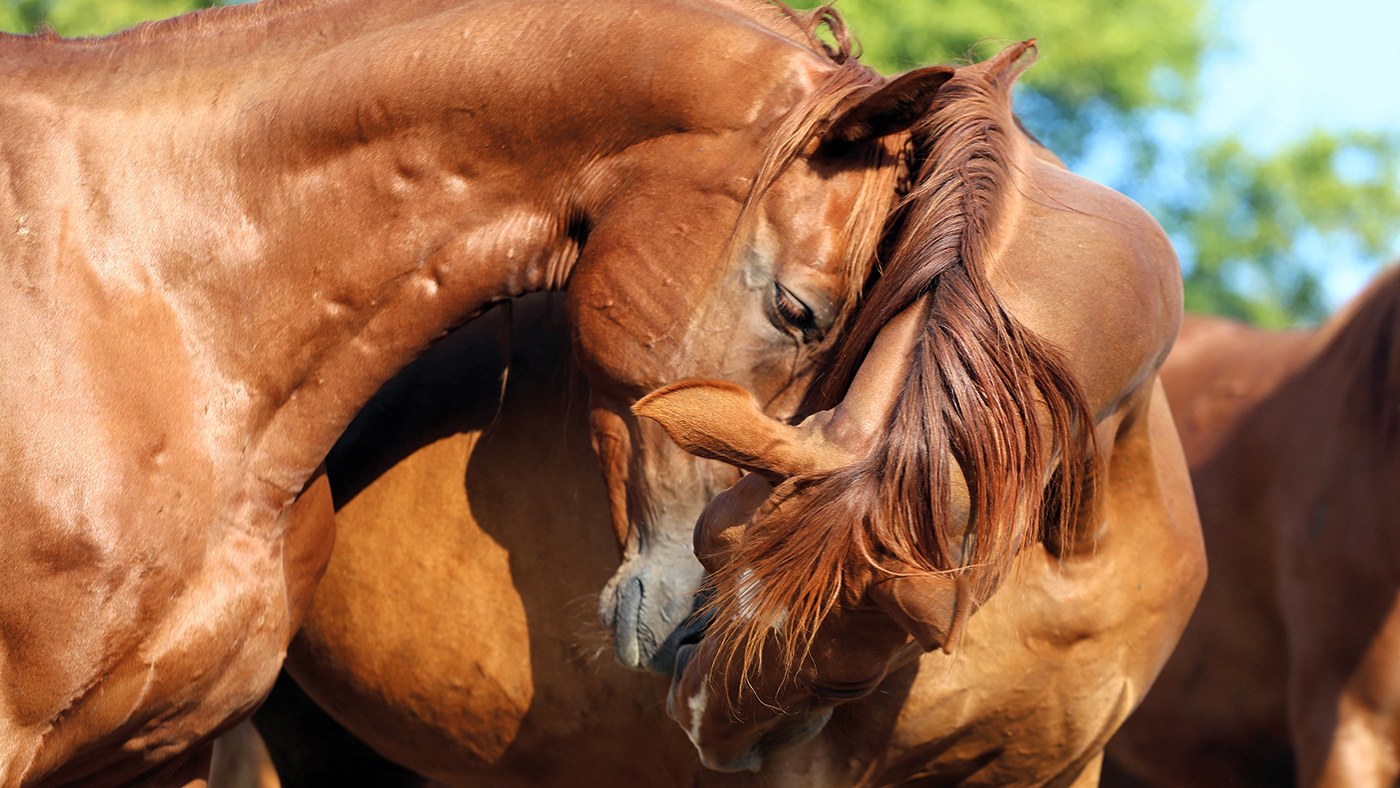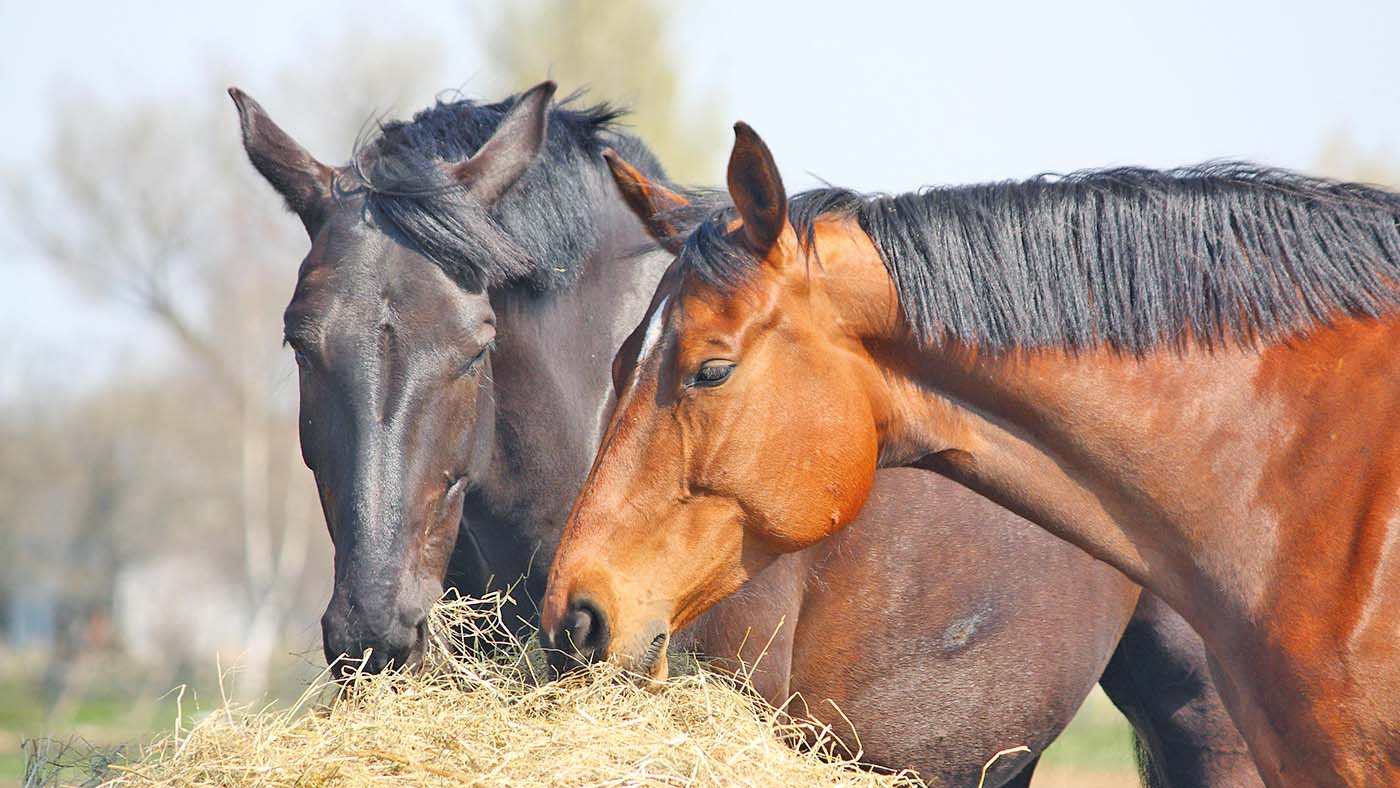Could moving away from conventional grazing systems help weight management? Dr Tamzin Furtado reports
WITH equine obesity at alarming levels in the UK, managing weight is becoming an important part of everyday horse care. Traditionally, weight management is achieved through stabling, muzzle use, increased exercise or the use of “starvation paddocks”, but some owners are seeking methods which do not restrict their horses’ access to the “three Fs”: friends, forage and freedom.
A survey of UK owners conducted last summer explored the use of alternative grazing systems, not just for keeping weight under control but also for reasons such as the management of arthritis and behavioural issues related to stress. Each option aimed to provide enriched turnout areas, where horses can live in groups and access a range of low-calorie forages.
It is important to note that no one system was a panacea for every owner; all have their pros and cons, highlighting that any changes should be considered on an individual level. These innovative ideas provide food for thought, however, for welfare-friendly weight control.
ON THE MOVE
TRACK systems allow horses access to a track created around the outside of a paddock. Resources such as water, hay and shelter are placed at different points, to encourage the horses to move in order to access them.
Tracks may cross multiple fields and are sometimes dotted with features, including hedgerows for foraging, different terrains (sandpits, streams or steps, for example) and enrichment such as scratching posts, herb gardens and flavoured water stations. The centre section can either be cut as hay or left as standing forage for winter, or managed with Equicentral principles (discussed later).
The upside is that the horses are encouraged to keep moving around the track to access their resources, while the footfall and lack of space means grass growth is limited – making this ideal for overweight horses. Horses are living in an enriched environment, usually as a herd, which can reduce stress levels.
However, track systems are not without their issues. Because of heavy footfall over a limited area, tracks which are not surfaced can become very muddy; as a result, many owners remove their tracks entirely for the winter months. Surfacing is ideal, but is clearly expensive and may require planning permission.
The reduced space can also be a problem in terms of herd dynamics, with careful attention required to ensure that the herd is cohesive – particularly when introducing new horses.
When creating grass tracks to manage obese animals, it can be difficult to limit the grazing enough to reduce their weight. Some users resort to using grazing muzzles or strip grazing the track to keep grass levels low.
Some horses may not suit some aspects of track life; certain ponies reportedly do not move more but instead simply wait at the hay feeder. Others escape onto the centre section, and some may find the concept of a track itself confusing. Tracks should never be designed in complicated shapes like spirals or zig-zags.

IMPROVING PASTURE
THE Equicentral system, developed by Equiculture, is a philosophy based around improving soil health in order to then maximise grass health and biodiversity, and thus produce healthy horses. The principles translate the science of regenerative agriculture in a way that can be used by horse owners.
The system proposes that horses are going to spend time “loafing” – hanging out, resting and sleeping – so we should allow them to do so in an area set up for this to let paddocks rest. The heart of the system is therefore a surfaced, non-mud area such as a stable yard or arena, where all the required resources are placed.
Leading off from this, horses have access to very lightly grazed paddocks that are rotated regularly – think maybe one week, rather than a season. Grass is never allowed to drop below 5cm in length, meaning that horses purportedly graze on the fibrous, stalky sections rather than carbohydrate-rich, stressed grass.
Horses always have access to come back to the loafing area at their choosing, but do not always have access to the field; thus, they follow a pattern of grazing for a while before returning to the yard area to drink and rest.
The Equicentral principles are based on modern sustainable farming methods. Some users suggested that they were surprised by how the grazing of “healthy” grasses led to better management of weight. Moreover, horses whose weight was a concern could also be easily kept in the loafing area, if necessary, rather than allowed out to grass – meaning that multiple horses with different dietary needs could still be managed as a cohesive herd.
The survey found that commitment was required, however, as it would take time (and possible re-seeding) before traditional horse pastures would transform into the diverse grasses which are preferable. In addition, some horses may not learn to self-regulate their intake, so the system needs careful implementation for each individual.
Some owners combined both ideas, using a surfaced, grass-free track as the loafing area, while managing the centre area to allow light grazing. This allowed them a flexible option for managing diverse horses.
The final option – woodland and moorland turnout – simply involved using non-traditional areas where horses have access to relatively low-calorie forage, due to the general lack of grass in woodland areas and the lack of improved grass species, such as rye grasses, in moorlands.
In fact, some woodland areas provided almost grass-free turnout areas, where horses could instead forage the trees and plants and eat the hay supplied. Both environments nevertheless provide enriched spaces, where horses can wander, browse and spend time in a herd.
The survey found that woodlands and moorlands were of limited use in winter, given that both are prone to becoming muddy and waterlogged. It’s also necessary to check regularly for hazards such as splintered logs or poisonous plants.
Woodlands were reportedly more useful for weight reduction than moorland areas, and may be of particular interest to readers given the number of yards that have small patches of woodland areas fenced off from horses.

A HEALTHY BALANCE
NO one grazing method may suit every situation; continual monitoring and adjustments are necessary to optimise equine health and wellbeing.
Even if none of these options is possible, however, the principles of trying to incorporate low-calorie forage, herd living, freedom of choice and enrichment are key and worthy of consideration.
The survey
THE project, which prompted 758 responses, was a collaboration between the University of Liverpool and the Blue Cross, British Horse Society, British Equine Veterinary Association, The Donkey Sanctuary, The Horse Trust, Redwings and World Horse Welfare. Read the report at: bit.ly/3cqpyBM
This feature can also be read in this week’s Horse & Hound magazine, on sale Thursday 29 April
You may also be interested in…

*Opinion* Laminitis: a harsh reality and lessons learnt
Vets are sometimes unfairly accused of “money grabbing” yet if we choose to ignore what they tell us about obesity

Grazing muzzles – what are your options?

Grazing horses alongside livestock: what are the pros and cons? *H&H Plus*

The equine obesity epidemic: what can you do to help?
“No matter what your role is, what are you going to change, to help in this obesity epidemic?”

